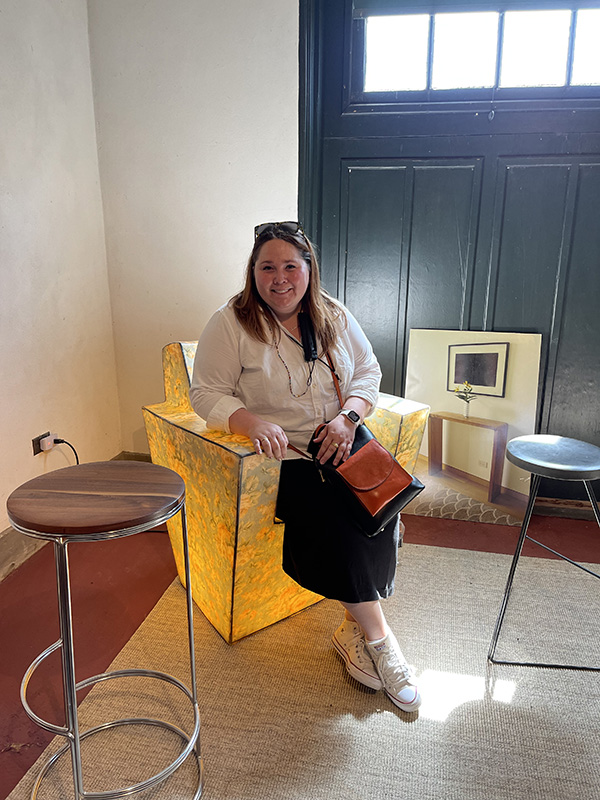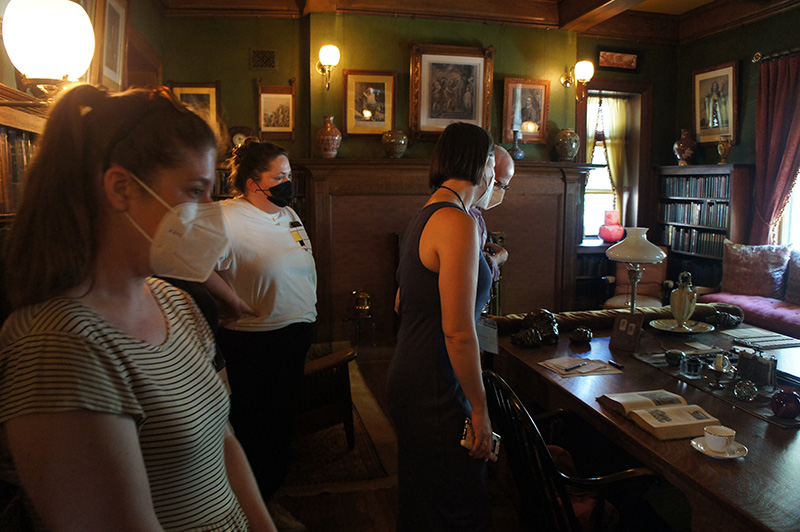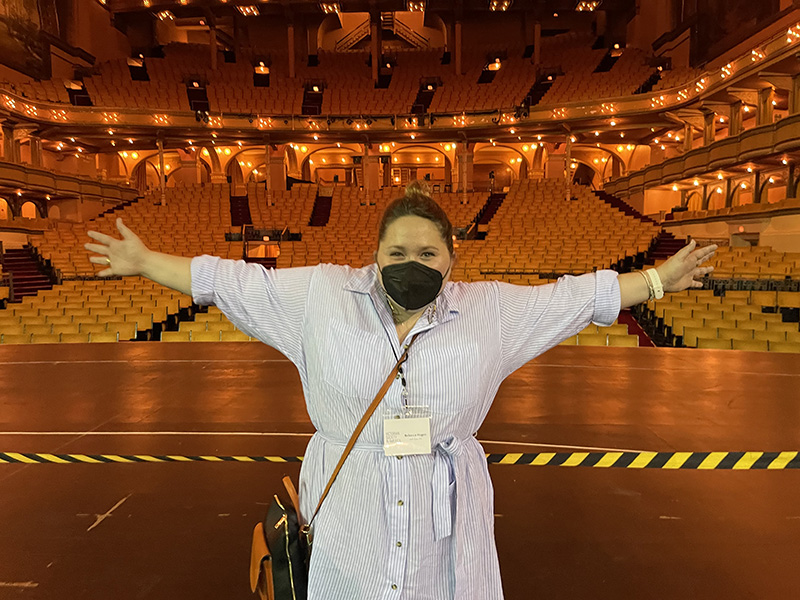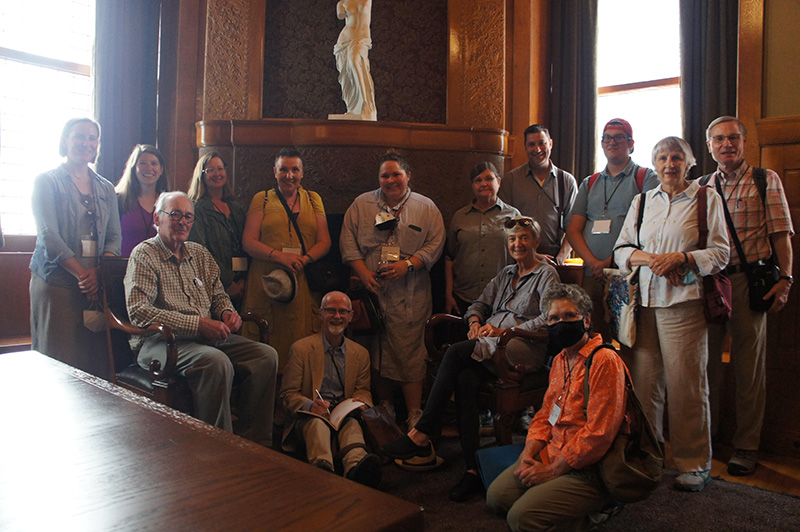Wright, Sullivan, and Tiffany: Studying Pathways to Modernism in Chicago
by Rebecca Hagen
As the registrar at Frank Lloyd Wright’s masterpiece, Fallingwater, I spend most of my time surrounded by incredible art and architecture. I have devoted my career to the study of objects and material culture at historic homes (including Thomas Jefferson’s Monticello and James Madison’s Montpelier), informally learning architectural history along the way when I was able.
As a recipient of a Decorative Arts Trust Continuing Education Scholarship to attend the 2022 Victorian Society in America’s Chicago Summer School, I was able to expand my understanding of Fallingwater by learning about the architects and designers that paved the way for Modernism as well as to learn more about Frank Lloyd Wright, his “Lieber Meister” Louis Sullivan, and his contemporaries. Meeting colleagues and visiting other Wright sites were very rewarding experiences that allowed me to put Fallingwater’s design into context within not only Wright’s career, but also within the time period and associated stylistic movements. As an art historian, I loved seeing Fallingwater’s collection of art, sculpture, and objects represented in the buildings we visited. I especially enjoyed the quantity of material we encountered by Louis Comfort Tiffany, as Tiffany Studios is represented in almost every room in Fallingwater.
Crab Tree Farm is a private residence with an incredible collection of British and American Arts and Crafts Furniture and objects as well as the only operating farm on Lake Michigan in the state of Illinois. One can even see the prototype of Anish Kapoor’s Cloud Gate in the garden.
The Marshall Field’s Building in Chicago (current home of a Macy’s department store) hosts a glorious Louis Comfort Tiffany favrile glass ceiling consisting of 1.6 million pieces creating the largest mosaic in this style. Unfortunately, the ceiling is now missing several pendant lights, but visitors can ride the elevator to the top floor to get a closer look any time during opening hours.
Our opening lecture on Chicago placed the importance of this opportunity perfectly into context and set the scene for the days to come. The presentation provided a broad-yet-detailed understanding of the city’s development. As a non-architecture expert, I found the discussion of building technology particularly fascinating and now have a better grasp of the fundamentals of architectural design and engineering in general.
Glessner House is architect H.H. Richardson’s 1887 masterpiece on Prairie Avenue in Chicago. The rich collection is filled with colorful William Morris wallpapers, rugs, and textiles.
Beyond the clear benefits to my career, I found the Summer School to be inspiring and fulfilling but also cathartic. Time spent with like-minded peers was enriching personally and professionally. Despite the long days touring and attending lectures, we often gathered together in the evening over dinner and drinks to discuss what we learned that day, sharing observations and insights. After two years of isolation during the COVID-19 pandemic, this experience was unbelievably meaningful. The chance to stretch my mental muscles and wholly dedicate my time to learning and experiencing, while also stepping outside of the office and away from the computer, was a tremendous privilege and pleasure.
Architectural firm Burham and Root designed the 12-story Rookery Building in 1888 and quickly installed their firm’s office (pictured here) on an upper story where they likely spent hours planning the design of the Chicago World’s Columbian Exposition. The Rookery is considered one of the earliest extant examples of the American skyscraper. The lobby was renovated by Frank Lloyd Wright in 1905.
I am extremely grateful that the Victorian Society in America and the Decorative Arts Trust gave me this rewarding opportunity to attend the Chicago Summer School, and I look forward to being able to attend similar programs in the future.
Rebecca Hagen is the registrar at Frank Lloyd Wright’s Fallingwater.
About The Decorative Arts Trust Bulletin
Formerly known as the "blog,” the Bulletin features new research and scholarship, travelogues, book reviews, and museum and gallery exhibitions. The Bulletin complements The Magazine of the Decorative Arts Trust, our biannual members publication.












